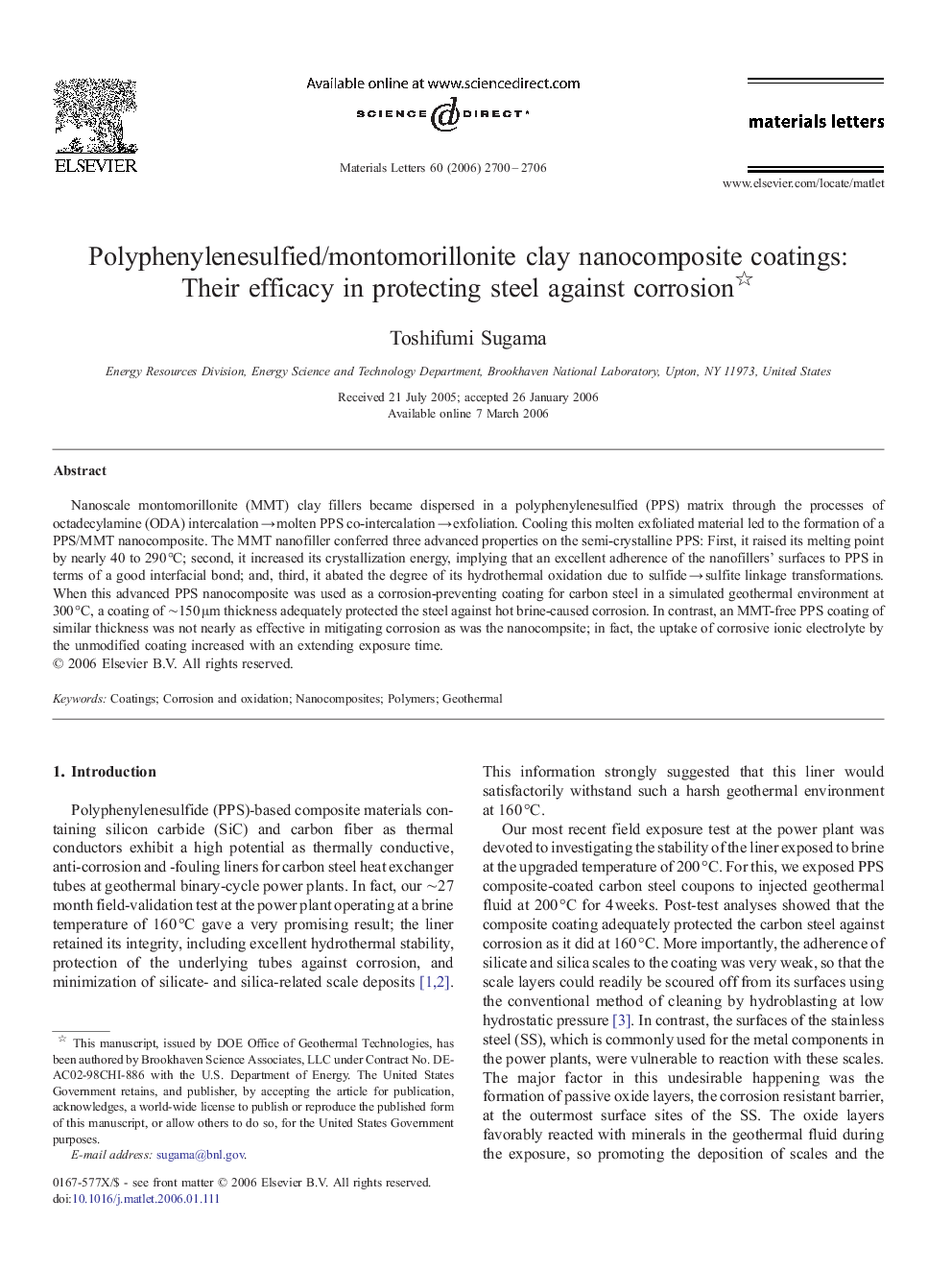| Article ID | Journal | Published Year | Pages | File Type |
|---|---|---|---|---|
| 1652356 | Materials Letters | 2006 | 7 Pages |
Nanoscale montomorillonite (MMT) clay fillers became dispersed in a polyphenylenesulfied (PPS) matrix through the processes of octadecylamine (ODA) intercalation → molten PPS co-intercalation → exfoliation. Cooling this molten exfoliated material led to the formation of a PPS/MMT nanocomposite. The MMT nanofiller conferred three advanced properties on the semi-crystalline PPS: First, it raised its melting point by nearly 40 to 290 °C; second, it increased its crystallization energy, implying that an excellent adherence of the nanofillers' surfaces to PPS in terms of a good interfacial bond; and, third, it abated the degree of its hydrothermal oxidation due to sulfide → sulfite linkage transformations. When this advanced PPS nanocomposite was used as a corrosion-preventing coating for carbon steel in a simulated geothermal environment at 300 °C, a coating of ∼150 μm thickness adequately protected the steel against hot brine-caused corrosion. In contrast, an MMT-free PPS coating of similar thickness was not nearly as effective in mitigating corrosion as was the nanocompsite; in fact, the uptake of corrosive ionic electrolyte by the unmodified coating increased with an extending exposure time.
